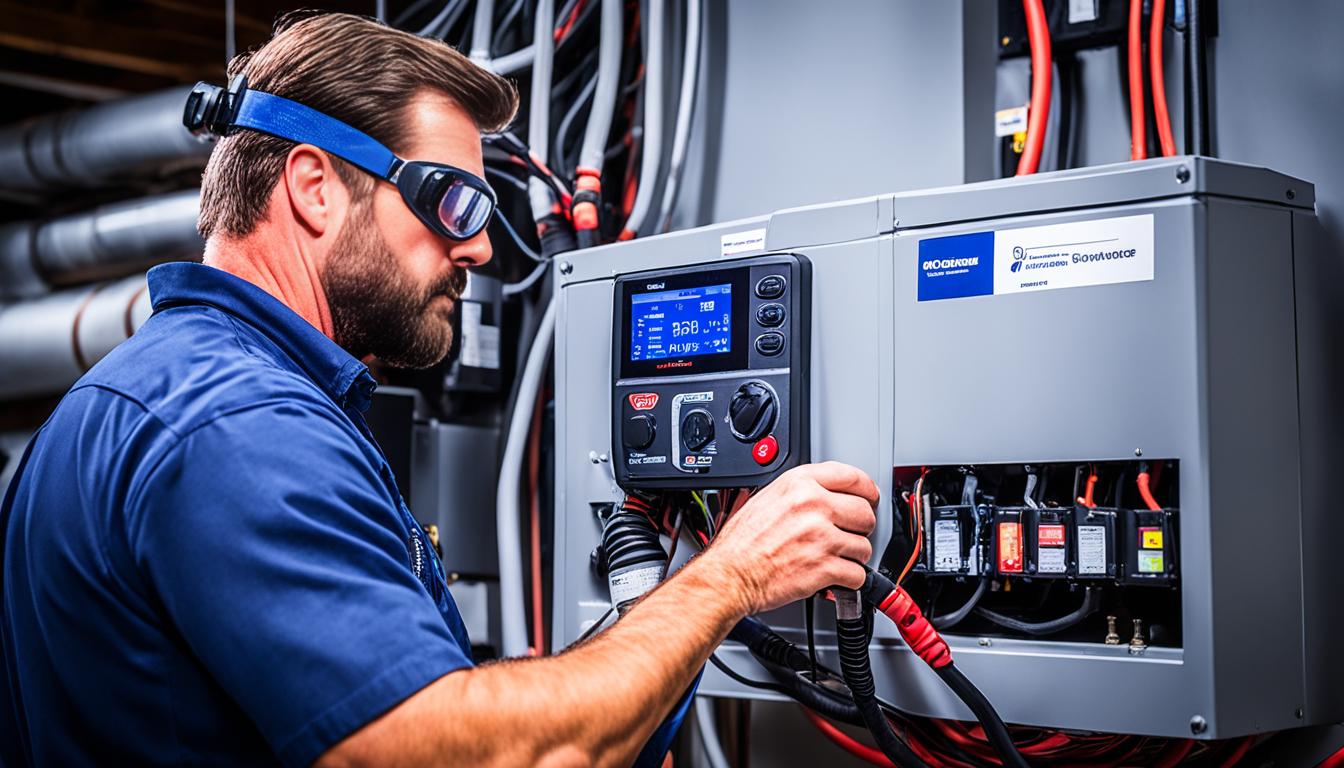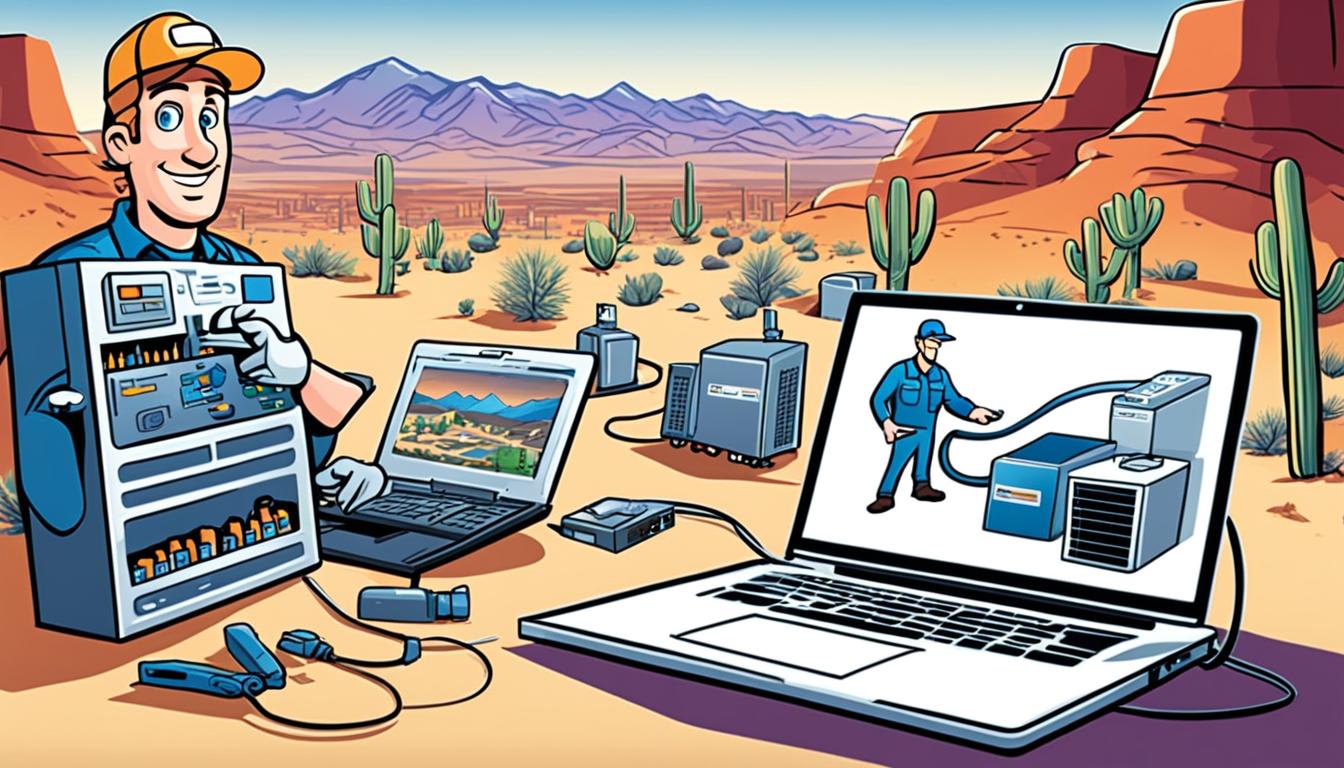Imagine you’re an HVAC technician on a scorching summer day, called to repair an air conditioning unit that has suddenly stopped cooling. You arrive at a sweltering home, eager to diagnose the problem and bring relief to the frustrated homeowner.
As you begin your investigation, you suspect that a refrigerant leak may be the culprit. But how do you pinpoint the exact location of the leak with precision and efficiency? This is where choosing the right leak detection tool becomes crucial.
Two commonly used options come to mind: infrared leak detectors and heated diode leak detectors. Understanding the key differences between these two technologies can lead you to make an informed decision that enhances your diagnostic accuracy and saves you valuable time.
Key Takeaways:
- Infrared leak detectors use a beam of infrared light to analyze the type of refrigerant, offering sensitivity and accuracy for all refrigerant types.
- Heated diode leak detectors rely on specific gas molecules and are more sensitive to certain refrigerants.
- Consider factors such as sensitivity, sensor life, and cost when choosing between infrared and heated diode leak detectors.
- High sensitivity and longer sensor life make infrared leak detectors a valuable investment for HVAC technicians.
- Weigh the advantages and disadvantages of each type of leak detector to make an informed decision that suits your specific needs.
Advantages of Infrared Leak Detectors
When it comes to professional leak detection equipment, infrared leak detectors stand out as a reliable and effective choice. These advanced devices offer several advantages over other types of leak detectors, making them an invaluable tool for HVAC technicians and contractors. Let’s explore some of the key benefits of using infrared leak detectors:
- High sensitivity: Infrared leak detectors are renowned for their exceptional sensitivity to refrigerant leaks. These devices can detect leaks as low as 0.10 ounces per year, ensuring that even the tiniest leaks are identified promptly.
- Long-lasting sensors: Unlike traditional leak detectors, infrared leak detectors boast sensors that have a significantly longer lifespan. Some sensors can last up to 1,000 hours or even 10 years, reducing the need for frequent replacements and saving both time and money.
- Adaptability to various environments: Infrared leak detectors are highly adaptable and perform well in different environments. They can effectively locate leaks by detecting high concentrations of refrigerant, regardless of the specific conditions or surroundings.
- Elimination of other detection methods: With the use of infrared leak detectors, the need for additional detection methods such as soap bubbles and uv dyes is eliminated. This streamlines the leak detection process, saving time and effort for technicians.
While infrared leak detectors may have a higher upfront cost compared to other types of leak detectors, their durability and unmatched sensitivity make them a worthwhile investment for HVAC professionals. These devices provide accurate and reliable results, ensuring that leaks are promptly identified and repaired, ultimately contributing to improved system performance and energy efficiency.
| Infrared Leak Detectors | Heated Diode Leak Detectors | |
|---|---|---|
| Leak Detection Sensitivity | High: 0.10 ounces per year | Moderate: Varies depending on refrigerant type |
| Sensor Lifespan | Longer: Up to 1,000 hours or even 10 years | Shorter: Typically replaced more frequently |
| Adaptability | High: Effective in various environments | Moderate: May have limitations in certain conditions |
| Additional Detection Methods | Not required: Can eliminate the need for other methods | May be necessary: Additional methods sometimes needed |
| Cost | Higher upfront cost, but greater long-term value | Lower upfront cost, but may require more frequent replacements |
Key Takeaways:
- Infrared leak detectors offer exceptional sensitivity, capable of detecting even the smallest refrigerant leaks.
- The sensors in infrared leak detectors have a longer lifespan compared to other leak detectors.
- These detectors are adaptable to different environments and eliminate the need for additional detection methods.
- Although they may have a higher upfront cost, infrared leak detectors provide durability and superior performance, making them a valuable investment for HVAC professionals.
Disadvantages of Infrared Leak Detectors
Infrared leak detectors, while efficient and reliable, do have some drawbacks that HVAC professionals need to consider. Understanding these disadvantages will help you make an informed decision when choosing between infrared and heated diode leak detectors.
Higher Cost
Compared to other types of leak detectors, infrared leak detectors tend to have a higher price tag, typically ranging from $300 to $400. This upfront cost may be a consideration for contractors who are working within a budget.
Limited Warranty
The warranty period for infrared leak detectors is usually one to two years. Given the higher cost of these devices, some professionals may find that the warranty period does not provide sufficient coverage. It’s important to carefully review the warranty terms before making a purchase decision.
Challenge in Confined Spaces
One challenge that some users face with infrared leak detectors is the difficulty of maneuvering the sensor in confined spaces. The sensor’s maneuverability can be hindered, making it harder to pinpoint leaks accurately in tight or hard-to-reach areas.
Alternative Detection Methods
In certain situations, traditional detection methods such as dyes and soaps may still be useful, especially when infrared detection proves challenging. While infrared leak detectors offer advanced technology, consider keeping alternative detection methods as backups to ensure comprehensive leak detection.
Despite these disadvantages, infrared leak detectors remain a valuable tool for HVAC professionals, especially when it comes to their sensitivity and accuracy in detecting refrigerant leaks. Consider your specific needs and budget before making a final decision on which type of leak detector is best suited for your work.
How to Choose Between Infrared and Heated Diode Leak Detectors
When it comes to HVAC leak detection, choosing between an infrared leak detector and a heated diode leak detector can be a critical decision for AC repair contractors. To make an informed choice, you need to evaluate your specific needs and consider several important factors.
Firstly, consider the types of refrigerants you frequently work with. Both infrared and heated diode leak detectors have their strengths and weaknesses when it comes to detecting different types of refrigerant gases. It’s essential to choose a detector that is compatible with the refrigerants commonly used in your work.
Secondly, think about the expected lifespan of the detector’s sensor. Infrared leak detectors often have longer sensor life compared to heated diode leak detectors. Considering the cost and hassle associated with sensor replacement, opting for a leak detector with a longer sensor life can be a wise investment.
Another crucial step is to conduct thorough research on reputable leak detector brands and technologies. Look for brands that have a proven track record of quality and reliability. Reading customer reviews and seeking recommendations from experienced professionals can help you make an informed decision.
Additionally, it’s essential to anticipate future refrigerant transitions in the industry. As regulations evolve, the HVAC industry may shift towards new types of refrigerants. To future-proof your leak detection equipment, choose a detector capable of handling both current and upcoming refrigerants.
Ultimately, the right choice between an infrared leak detector and a heated diode leak detector depends on your individual requirements, budget, and preferences as an HVAC professional. By carefully considering the factors mentioned above, you can confidently select the best leak detector for your specific needs and enhance the efficiency of your HVAC leak detection work.





0 Comments